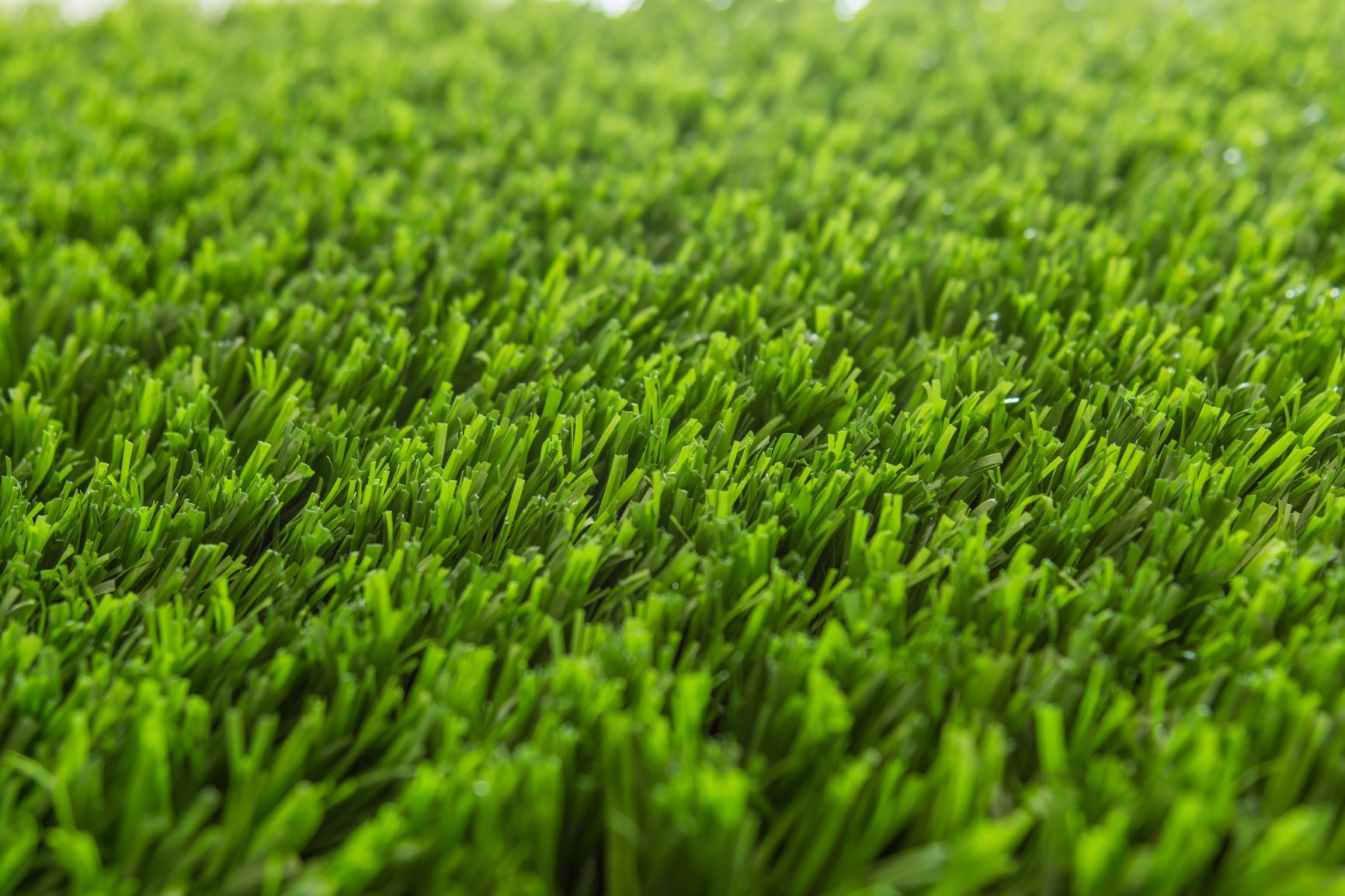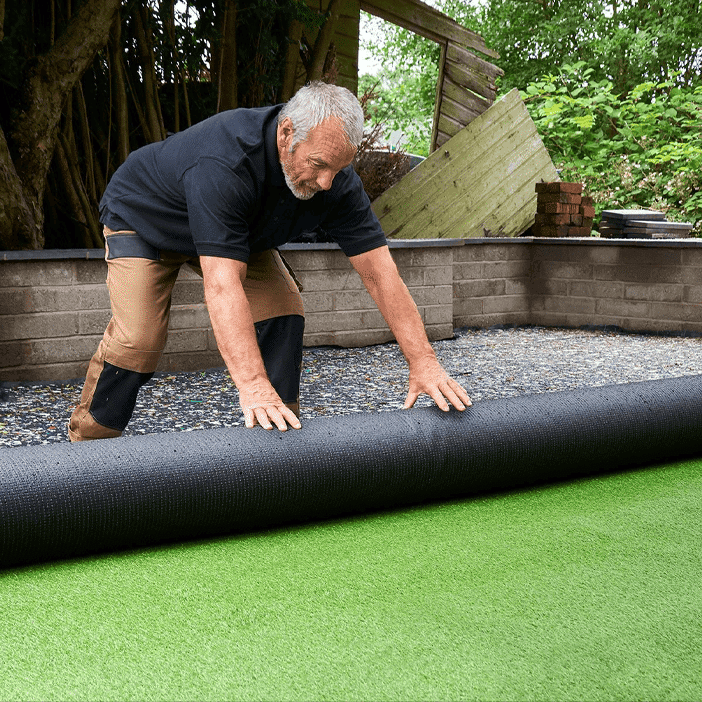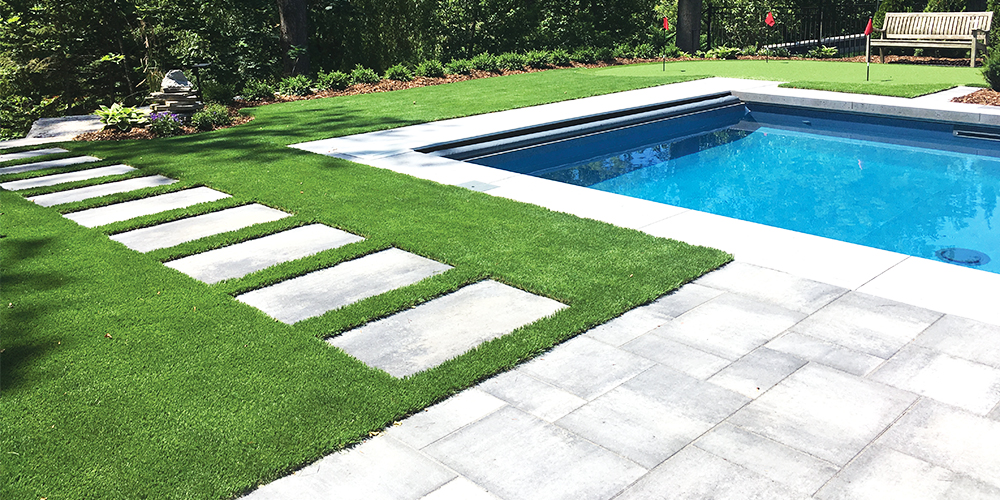Delve Into the Environmental Advantages of Opting for Artificial Grass Solutions
The fostering of artificial lawn options provides a compelling opportunity to resolve pushing ecological difficulties. By substantially lowering water use and minimizing the application of harmful chemicals, these choices not only promote lasting landscaping yet likewise safeguard neighborhood ecological communities.
Water Conservation Benefits
One of the most significant benefits of fabricated lawn is its capability to preserve water. In contrast, fabricated grass does not require watering, considerably decreasing the total need for water sources.
By removing the need for normal watering, synthetic grass adds to sustainable landscape techniques and aids minimize the ecological impact of excessive water intake. Moreover, the preservation of water includes the reduction of drainage, which can result in dirt erosion and waterway air pollution.
Furthermore, the setup of synthetic grass enables home owners and municipalities to assign water resources more efficiently, concentrating on important uses such as alcohol consumption water and agriculture. The change in the direction of synthetic grass not just promotes responsible water usage yet also straightens with wider environmental objectives intended at preserving natural deposits.
As communities progressively prioritize sustainability, the water preservation advantages of synthetic grass offer an engaging situation for its adoption in business and property landscaping tasks.
Minimized Chemical Usage
The change to artificial turf significantly reduces the reliance on chemical treatments generally used in natural lawn upkeep. Traditional lawn administration typically involves the application of fertilizers, pesticides, and herbicides to advertise growth and control insects. These chemicals can position risks to human health and wellness, regional wild animals, and the setting, contributing to dirt and water contamination.
On the other hand, synthetic grass gets rid of the requirement for these dangerous substances. When mounted, it requires minimal maintenance, primarily being composed of normal cleansing and seldom infill replenishment. This decrease in chemical use not just profits the instant environment however also adds to more comprehensive ecological stability. By lessening the release of artificial compounds right into the environment, fabricated turf advertises much healthier soil and water supply.
In addition, the absence of chemical runoff connected with synthetic grass setups aids shield local waterways from contamination, supporting water life and preserving biodiversity. Turf installation phoenix az. As communities progressively prioritize sustainable methods, going with man-made lawn offers a viable solution that straightens with environmental preservation objectives. Via this change, homeowner can delight in lush green spaces without compromising ecological health and wellness, leading the means for a much more lasting future
Lower Carbon Footprint

In addition, the installment of synthetic lawn can cause considerable water preservation. Natural grass call for substantial amounts of water for irrigation, which not only includes in the carbon footprint associated with water extraction and treatment however likewise strains local water sources. In comparison, synthetic grass requires minimal upkeep, requiring no watering, thereby considerably decreasing water use and its linked energy prices.
In addition, the durability of artificial grass adds to its lower carbon influence. With a life expectancy of up to 15 years or even more, the demand for constant replacements is decreased, causing less waste and lower power consumption in manufacturing and disposing of typical yard choices. Generally, synthetic grass presents a lasting choice for environmentally aware landscape design.
Environment Conservation
Habitat preservation is a critical factor to consider in the argument over landscape design choices, specifically when comparing synthetic grass to all-natural lawn. Natural turf yards often need extensive upkeep, including the usage of chemicals, plant foods, and herbicides, which can negatively impact local communities. These chemicals can leach right into the soil and rivers, hurting native vegetation and fauna and disrupting neighborhood environments.
On the other hand, synthetic grass offers a chance to decrease the ecological footprint of landscaping. By going with artificial yard, homeowners can minimize the interruption of all-natural environments linked with traditional yard care techniques. Man-made turf eliminates the requirement for hazardous chemicals, therefore safeguarding neighboring wild animals and maintaining the stability of bordering environments. In addition, the installation of synthetic grass can lead to the conversion of former yard areas into more biodiverse landscapes, such as pollinator yards or indigenous plant locations, which can sustain local wildlife.
Eventually, the shift to synthetic grass not just preserves water and decreases maintenance initiatives yet additionally fosters a much more unified partnership in between human tasks and the natural environment, promoting habitat preservation at the same time.
Long-Term Sustainability
Long-term sustainability is a vital aspect in examining the benefits of man-made grass over standard yard yards. Among one of the most substantial advantages of fabricated turf is its longevity; it can last as much as 15-20 years click reference with minimal maintenance, look at here whereas all-natural yard needs frequent reseeding and substitute. This long life minimizes the demand for consistent sources, such as water, plant foods, and chemicals, which are crucial for preserving a healthy and balanced turf lawn.
In addition, fabricated lawn contributes to a reduction in carbon discharges associated with lawn treatment equipment. Typical yards frequently require gas-powered lawn mowers, trimmers, and blowers, all of which contribute to air contamination. Arizona turf. In comparison, synthetic lawn gets rid of the demand for such equipment, advertising a cleaner atmosphere
In addition, the manufacturing of artificial turf significantly makes use of recycled products, improving its sustainability profile. As producers embrace environmentally friendly techniques, the ecological impact of synthetic grass remains to diminish.

Final Thought
The fostering of synthetic grass services provides substantial ecological benefits, including substantial water preservation, minimized dependence on damaging chemicals, and a lower carbon footprint. Fabricated grass aids in preserving natural habitats by decreasing land disturbance and promoting lasting sustainability through the use of sturdy materials. Jointly, these aspects highlight the potential of fabricated lawn to add positively to environmental wellness and use a feasible option to conventional landscaping techniques in an increasingly resource-conscious world.
In comparison, man-made grass does not need watering, substantially minimizing the general demand for water resources. By decreasing the launch of artificial substances right into the environment, synthetic lawn advertises healthier soil and water systems.
In addition, the installation of synthetic lawn can result in considerable water conservation. In contrast, artificial grass needs marginal maintenance, requiring no watering, therefore dramatically minimizing water usage and its linked energy costs.
